Stainless steel pans are a staple in both home and professional kitchens, praised for their durability, heat conductivity, and sleek appearance. However, over time, even the highest quality stainless steel cookware can become discolored, develop stubborn stains, or lose its mirror-like shine. If you’re wondering how to clean discolored stainless steel pans, you’re in the right place. This comprehensive guide will walk you through everything from the causes of discoloration to 17 proven cleaning methods and expert care tips.
What Causes Stainless Steel Pans to Discolor?
Understanding the root of the problem helps in choosing the right cleaning method. Discoloration on stainless steel pans typically results from:
Heat Tint or Rainbow Staining
When stainless steel is exposed to high temperatures, it can develop a rainbow-colored tint, often bluish or purplish. This is a result of chromium oxide forming on the surface due to heat.
White Spots from Hard Water
Hard water, which contains high levels of calcium and magnesium, can leave behind white mineral deposits after evaporation. These spots can dull the pan’s surface and are resistant to regular washing.
Burn Marks & Food Residue
Overheating oil, burning food, or cooking sugary substances can leave black or brown stains that bond tightly with the steel.
Safety Tips Before You Start Cleaning
Before applying any cleaning method, prioritize safety to protect yourself and your cookware.
Protective Gloves and Ventilation
When working with acids like vinegar or hydrogen peroxide, wear gloves and ensure the area is well-ventilated.
Avoid Harsh Chemicals or Steel Wool
Using bleach, chlorine-based cleaners, or steel wool can scratch the surface and weaken the corrosion resistance of stainless steel.
Daily Maintenance to Prevent Discoloration
Regular maintenance prevents build-up and extends the lifespan of your cookware.
Proper Washing & Drying
Hand wash with mild dish soap and warm water after each use. Dry immediately to avoid water spots.
Avoiding Sudden Temperature Changes
Plunging a hot pan into cold water can cause warping or discoloration. Let the pan cool before rinsing.
Method 1: Using Baking Soda Paste
Baking soda is a mild abrasive and an excellent natural cleanser.
How to Make It
Mix 3 parts baking soda with 1 part water to form a thick paste.
Application Process and Rinse
Apply the paste with a soft sponge or microfiber cloth. Gently scrub the affected areas, let sit for 10-15 minutes, then rinse and dry.
Method 2: Vinegar Boil and Rinse
Perfect for removing rainbow stains caused by heat.
Best for Heat Tint
The acetic acid in vinegar breaks down the oxidized layer causing discoloration.
Step-by-Step Process
- Fill the pan with a mixture of one part vinegar to three parts water.
- Bring to a boil.
- Let cool and rinse thoroughly.
Method 3: Bar Keepers Friend or Commercial Cleaners
When to Use Commercial Options
If natural remedies fail, a commercial cleaner like Bar Keepers Friend is effective without damaging the steel.
Application Tips
Sprinkle on the affected area, rub with a damp sponge in the direction of the grain, rinse thoroughly, and dry.
Method 4: Lemon Juice and Salt Scrub
A gentle, citrus-based approach for light stains.
Natural Acidity Breakdown
The acid in lemon juice reacts with discoloration while the salt adds mild abrasiveness.
Gentle Yet Effective
Rub the mixture on the surface and leave for 15 minutes before scrubbing and rinsing.
Method 5: Cream of Tartar Solution
Great for overnight cleaning.
Overnight Cleaning Soak
Mix 2 tablespoons of cream of tartar in warm water and soak the pan overnight.
Rinse and Polish
Rinse in the morning and polish with a soft cloth.
Method 6: Hydrogen Peroxide & Baking Soda
For the most stubborn burnt residues.
For Burnt and Stubborn Stains
Sprinkle baking soda over the pan, pour hydrogen peroxide until it fizzes, let it sit, and then scrub gently.
Cautionary Use
Use gloves and ensure good ventilation due to potential fumes.
Method 7: Boiling Water with Dish Soap
Simple yet surprisingly effective.
Ideal for Light Discoloration
Fill the pan with water and a drop of dish soap. Bring to a boil to loosen stains.
Follow-Up with Soft Scrub
After boiling, use a soft sponge to remove loosened grime.
Method 8: Dishwasher vs Hand Washing
Pros and Cons
While dishwashers are convenient, the detergents and heat can dull or discolor stainless steel over time.
How Dishwashers Can Cause Discoloration
Exposure to hard water and aggressive detergents can leave behind residues or affect shine.
How to Restore Shine to Stainless Steel
Bring back that mirror-like finish with these pro tips:
Buffing with Olive Oil
Apply a small amount of olive oil to a microfiber cloth and buff in circles.
Using Microfiber Cloth
Always dry and polish using microfiber to avoid scratches and streaks.
What NOT to Do When Cleaning Stainless Steel Pans
Avoid these common pitfalls:
Avoid Chlorine, Bleach, and Abrasives
These chemicals compromise the protective chromium oxide layer.
Never Leave Water Sitting
Dry your pan immediately to prevent spotting and rust development.
Troubleshooting: When Stains Won’t Come Off
Sometimes you need to repeat or escalate.
Try Repeating Method
Often, repeating the cleaning method once or twice does the trick.
Contact Manufacturer or Consider Replacement
If nothing works, reach out to the manufacturer’s support. Warranty might cover certain issues.
Long-Term Storage and Care Tips
Keep your pans in top condition for years.
Store in Dry Place
Moist environments can cause rust on handles or rivets.
Nesting Without Scratching
Place a soft cloth or paper towel between nested pans.
Professional-Grade Stainless Steel Cleaners Reviewed
Top 3 Recommended Products
- Bar Keepers Friend Cleanser
- Weiman Stainless Steel Cleaner
- Therapy Stainless Steel Cleaner & Polish
How Often Should You Use Them?
Once a week or as needed after heavy usage.
FAQs about Cleaning Discolored Stainless Steel Pans
1. Can discolored stainless steel pans be restored to original shine?
Yes. Most stains and discoloration can be removed using the methods listed above.
2. Is vinegar safe for stainless steel?
Yes, but rinse thoroughly and avoid letting it sit too long to prevent dulling.
3. Will baking soda scratch stainless steel?
No, it’s a gentle abrasive that is safe for regular use.
4. Can I use bleach to clean my stainless steel pans?
No. Bleach can corrode stainless steel and should be avoided.
5. What is the best way to remove burnt-on food?
Try hydrogen peroxide and baking soda or boiling with vinegar.
6. Are commercial stainless steel cleaners better than homemade methods?
Not necessarily. Commercial cleaners are faster but homemade solutions are just as effective with more control.
Conclusion: Keeping Your Stainless Steel Like New
Caring for your stainless steel pans doesn’t have to be complicated. By understanding the causes of discoloration and using the right cleaning methods, you can maintain their appearance and performance for years. Whether you prefer natural remedies or professional-grade solutions, consistency is key. Clean regularly, dry immediately, and store smartly to enjoy stainless steel cookware that always looks brand new.
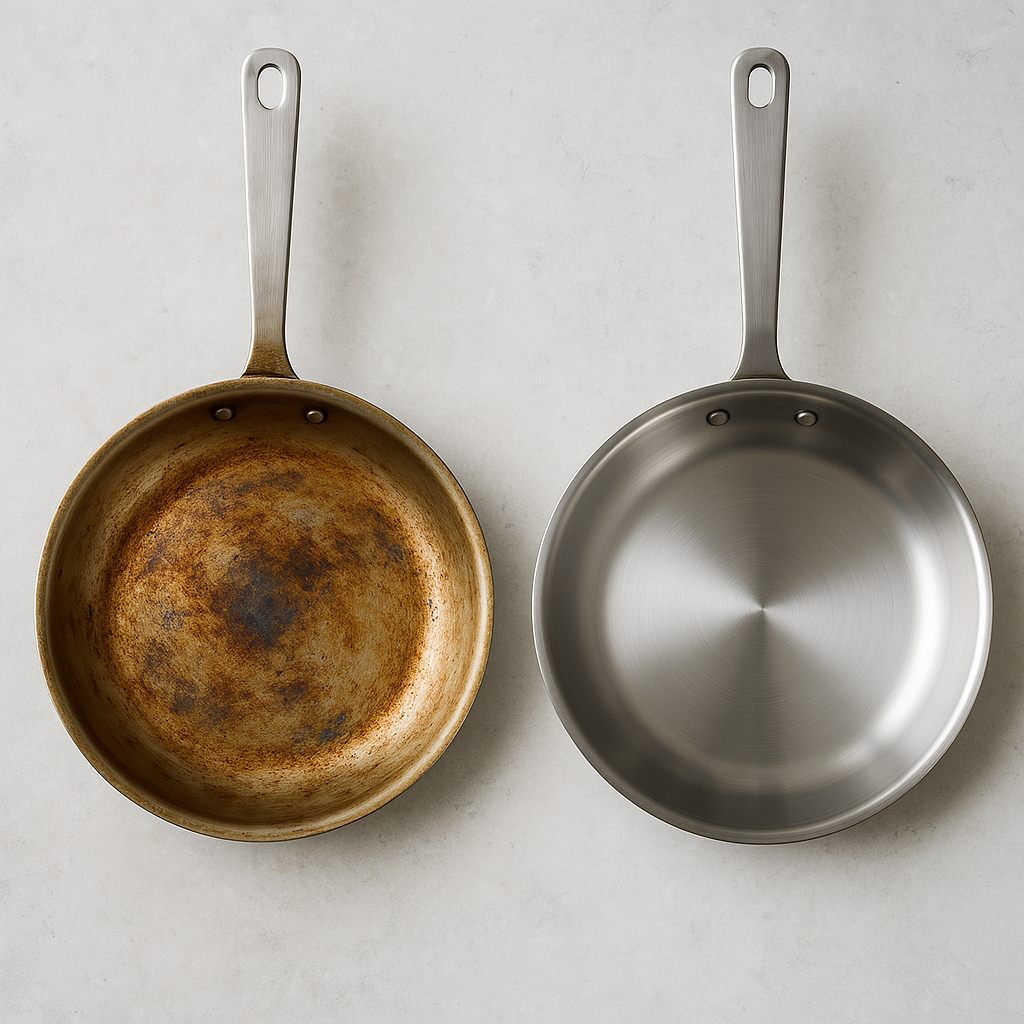

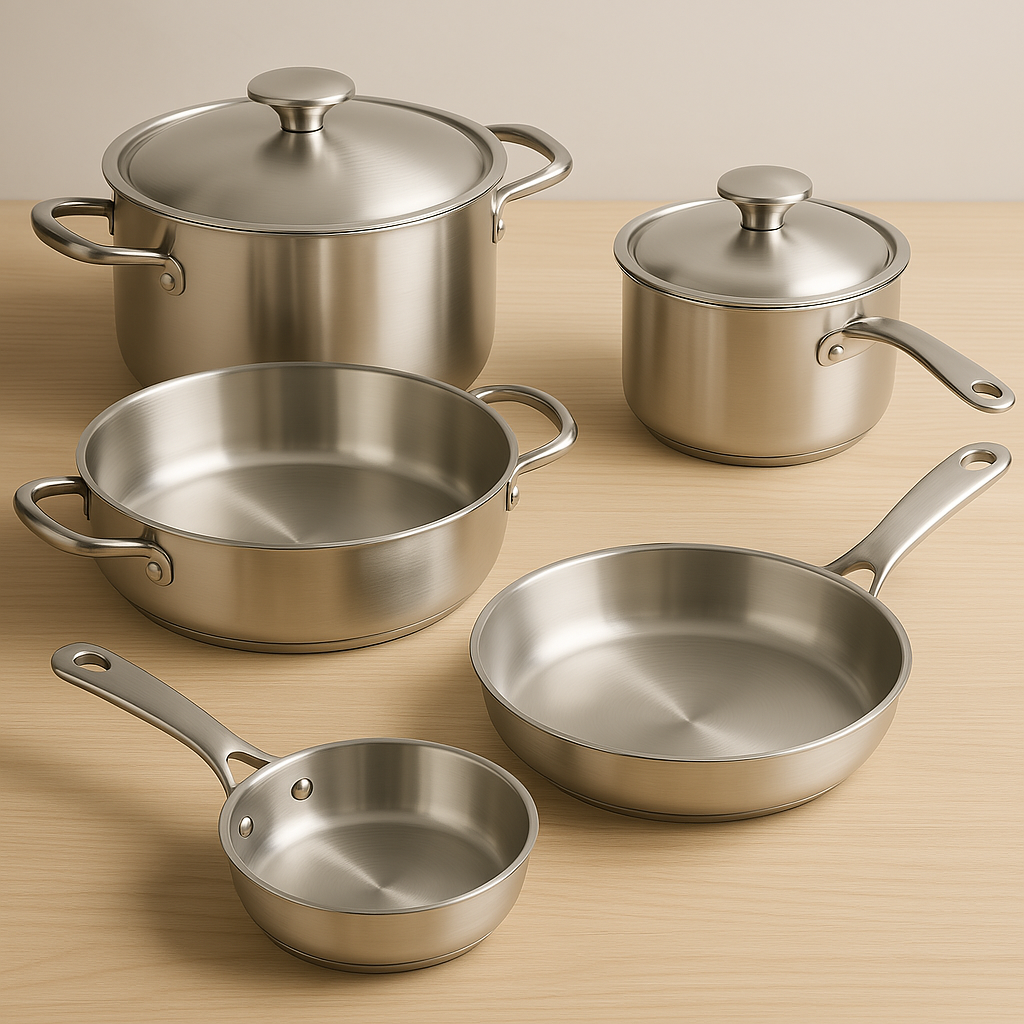
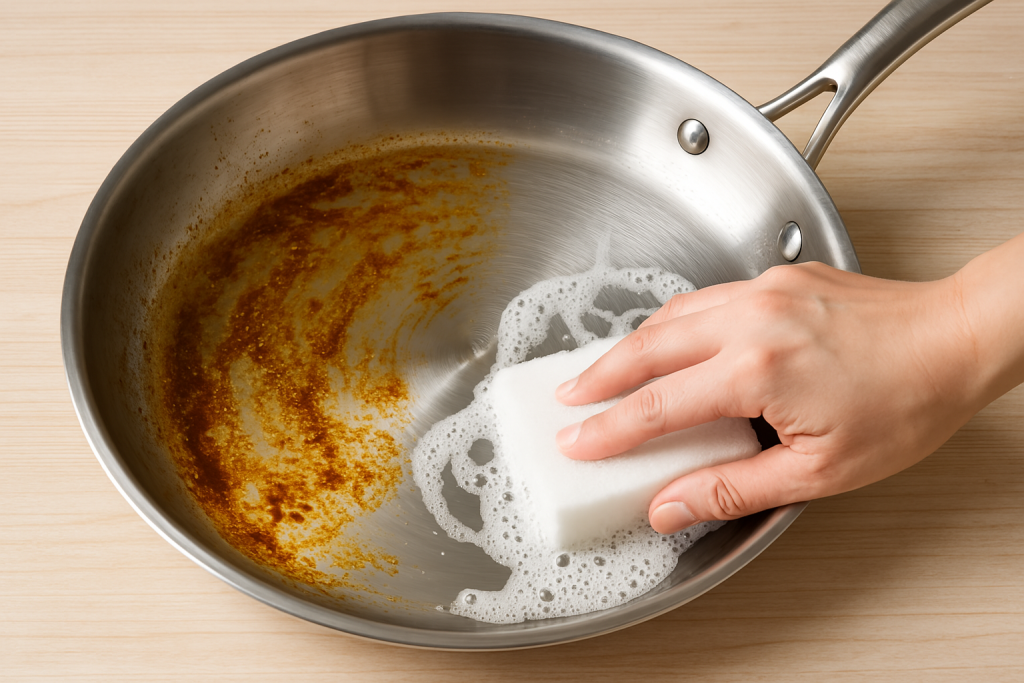
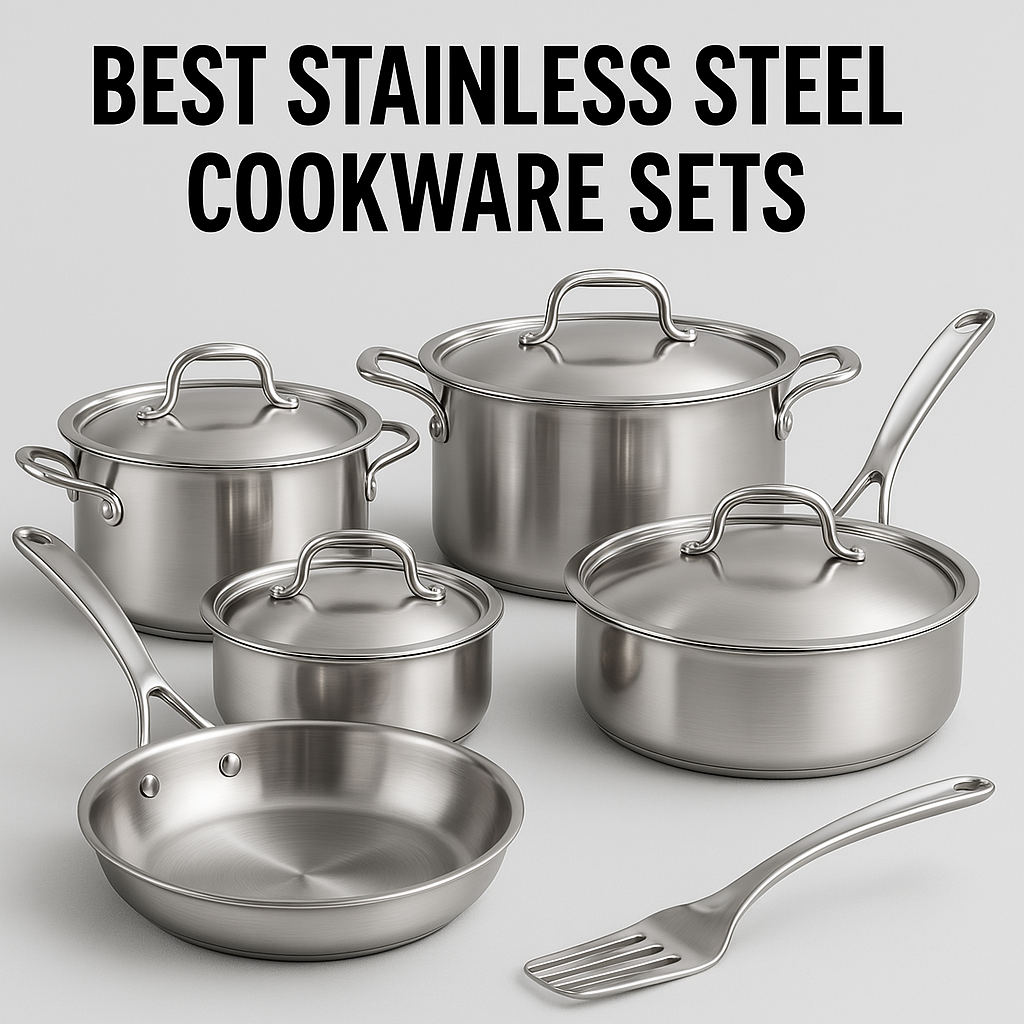
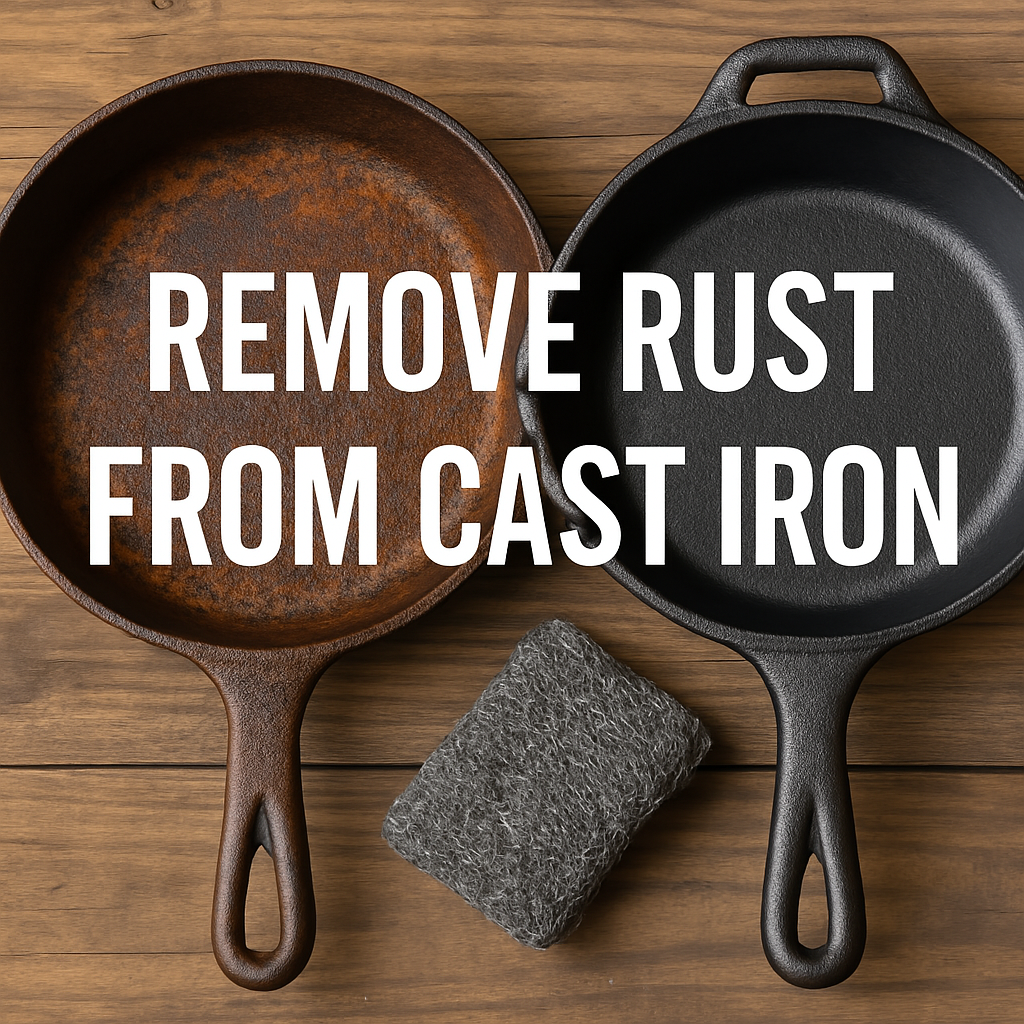
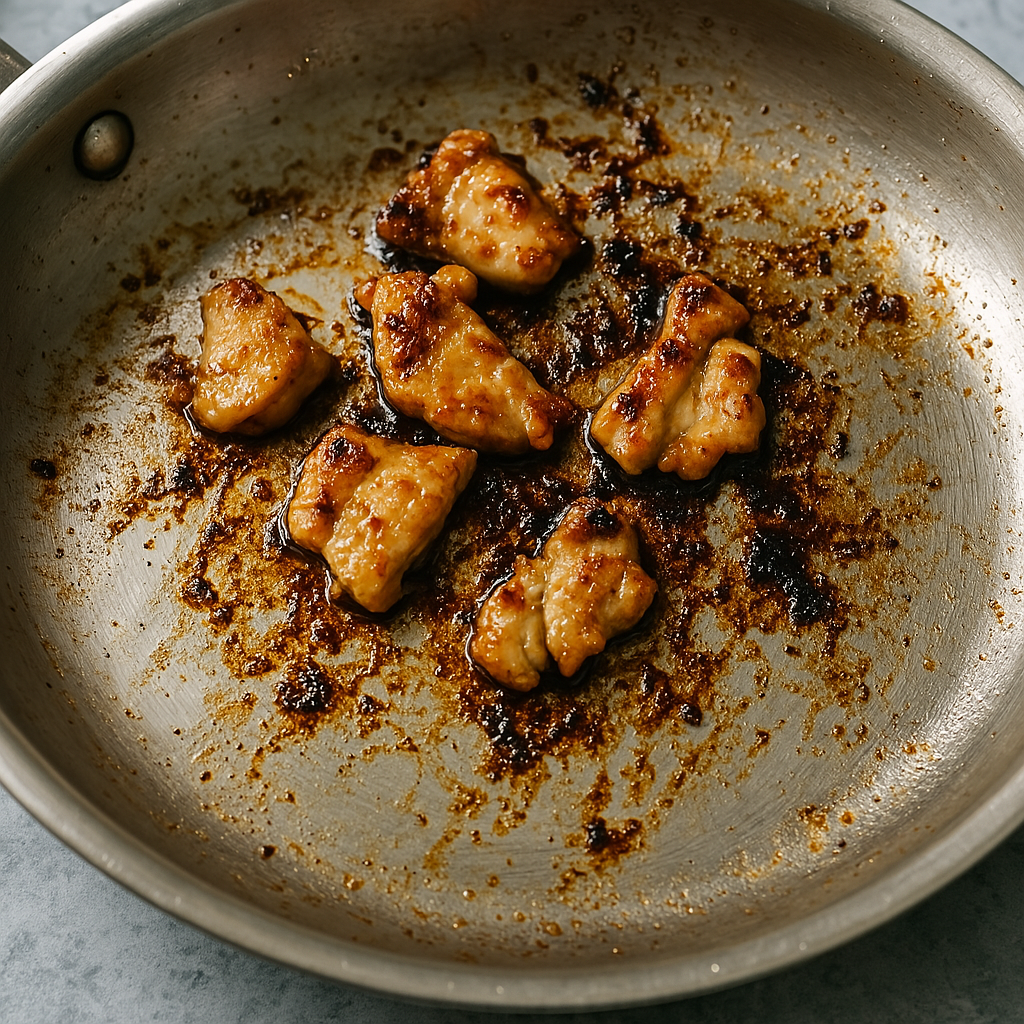
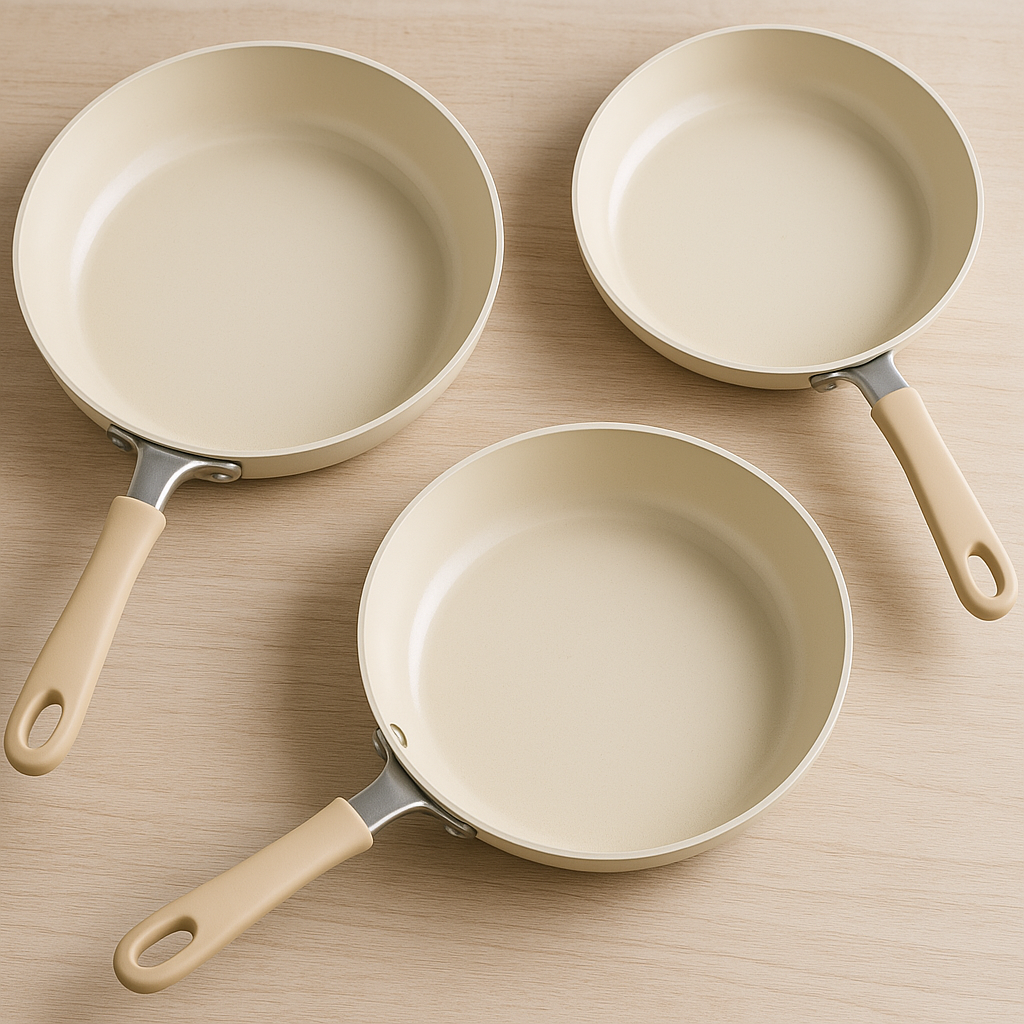
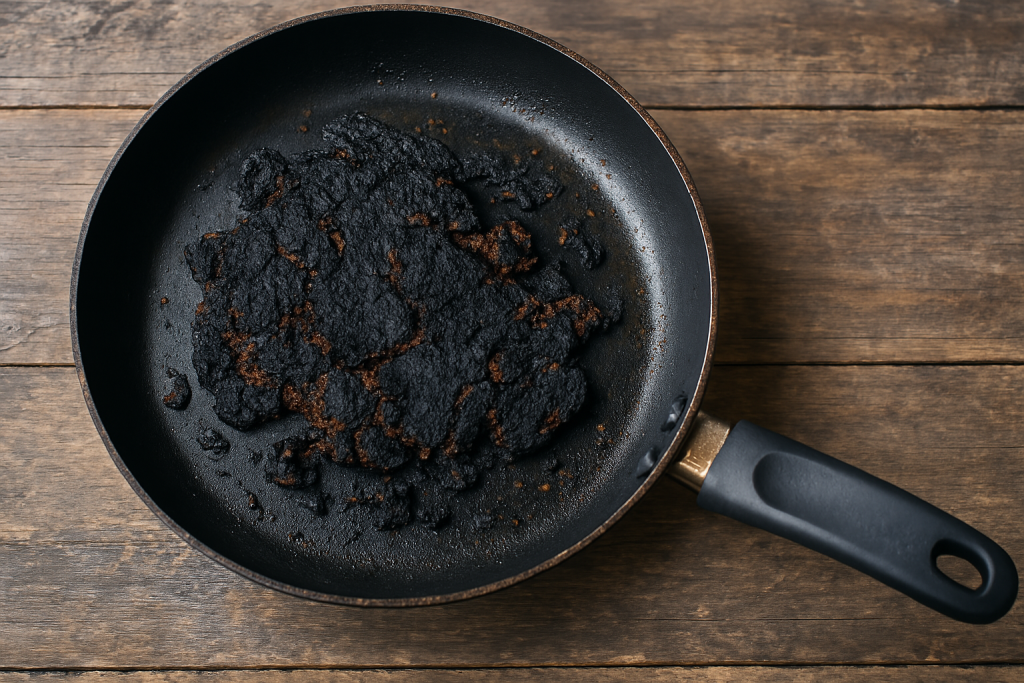
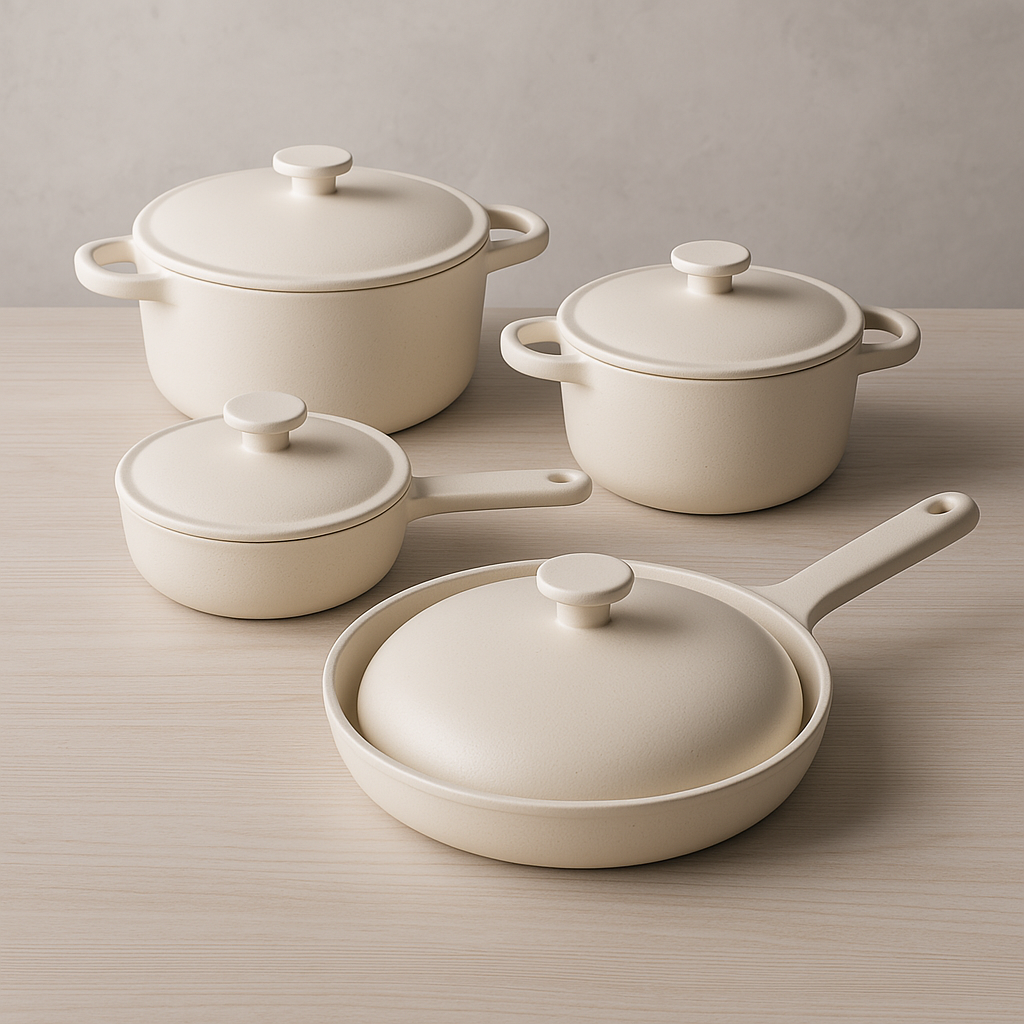
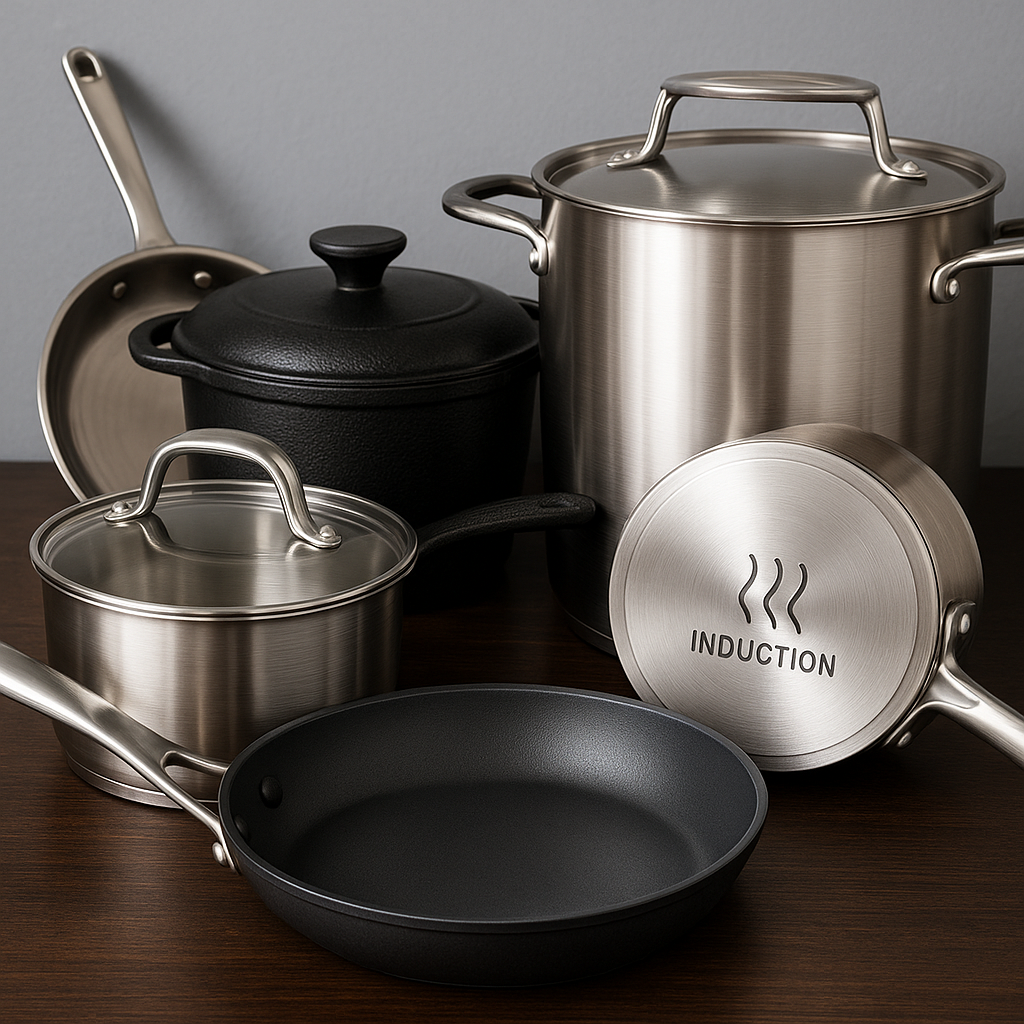
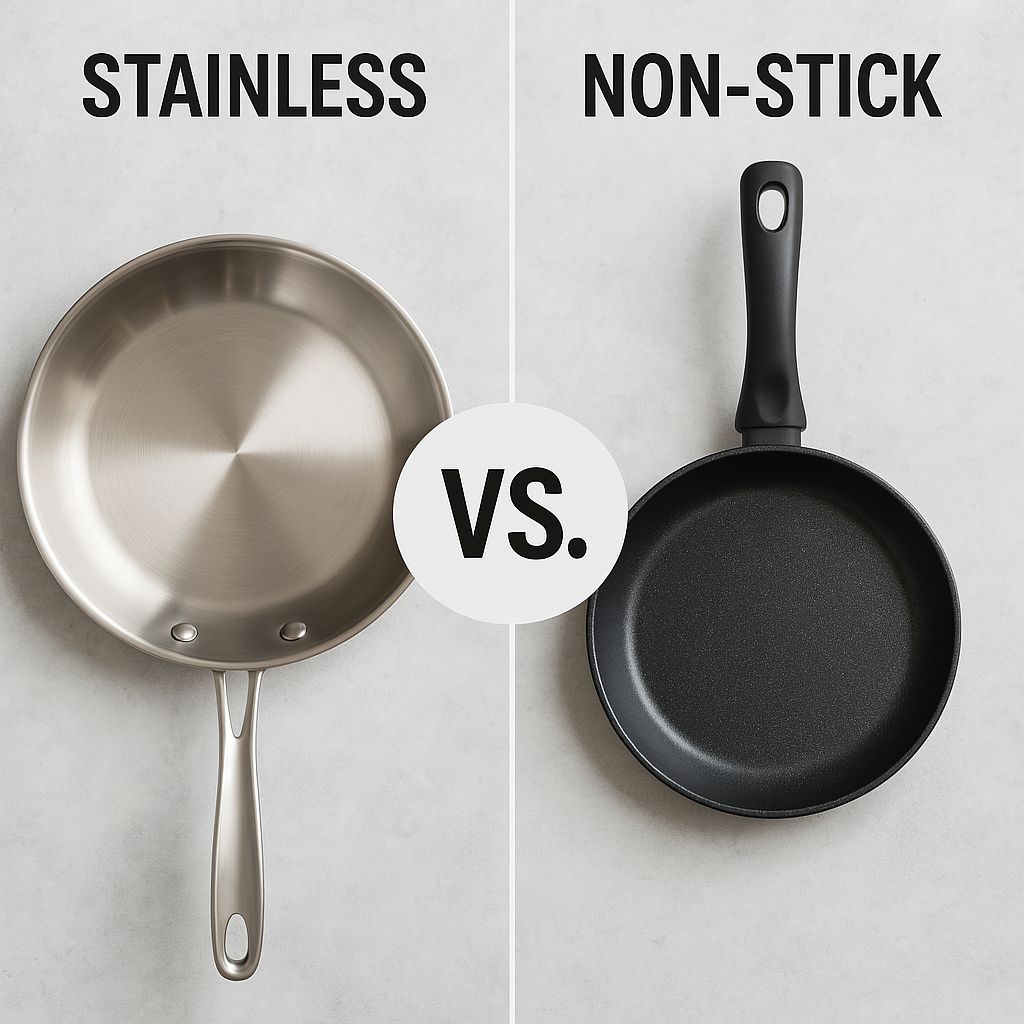
Leave a Reply